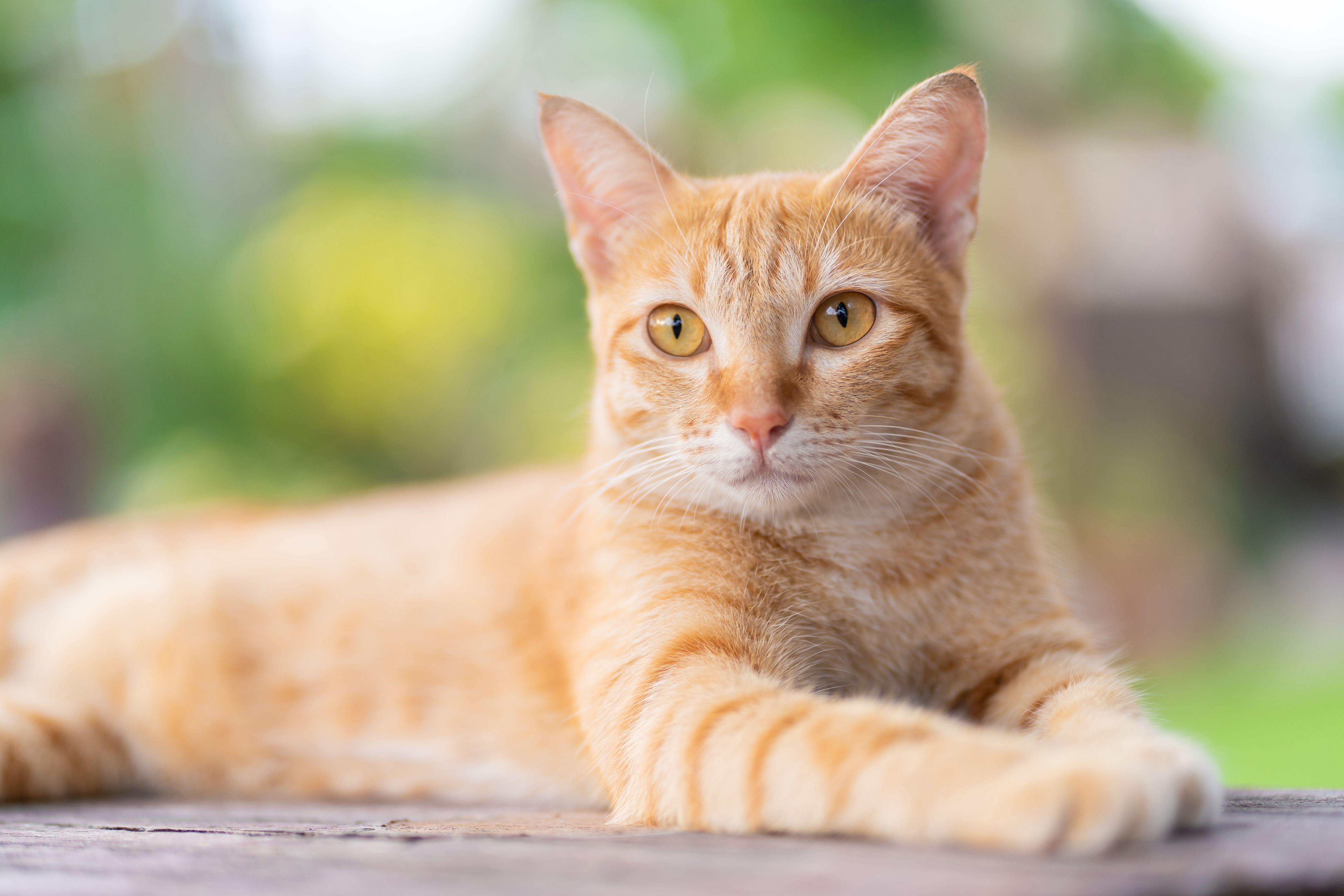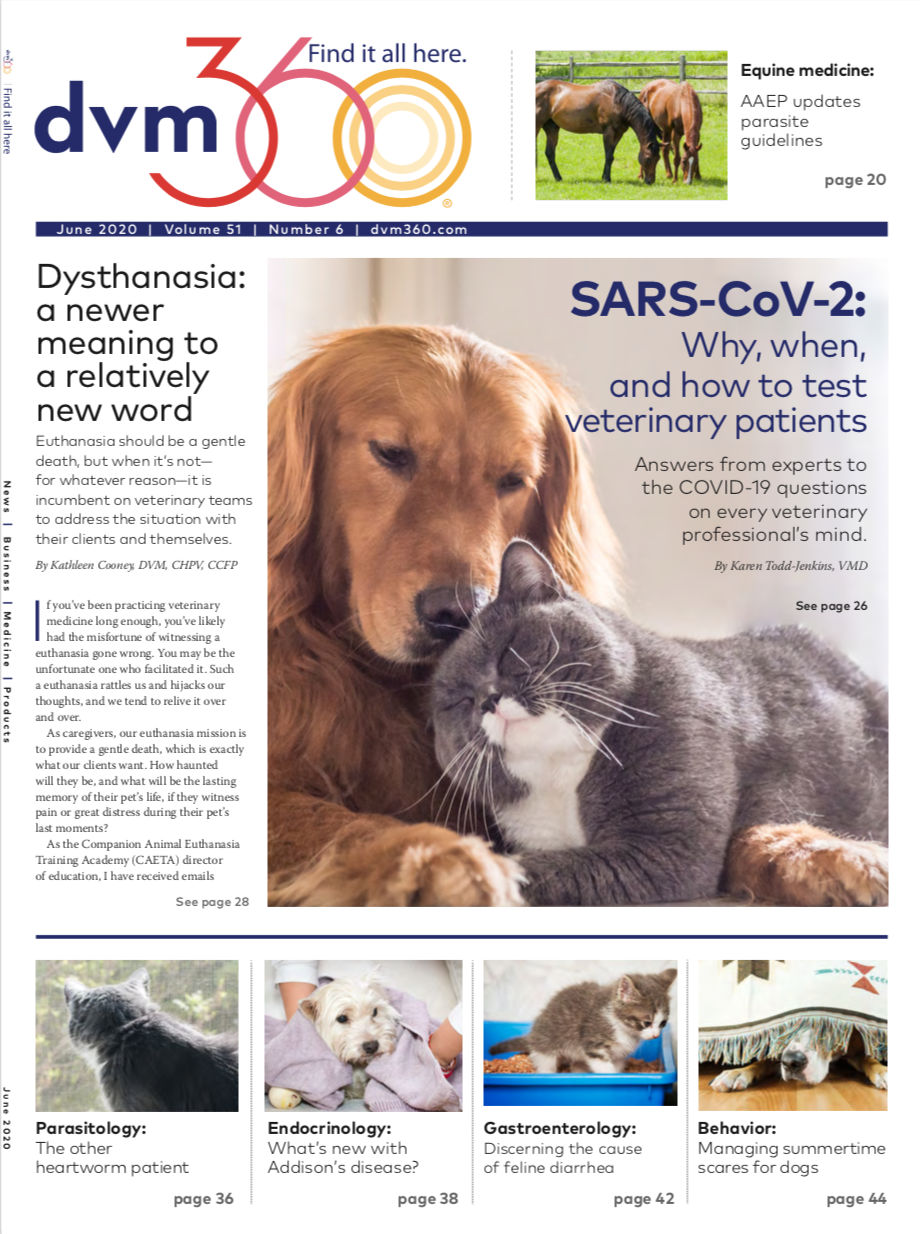As summer arrives and temperatures rise, conversations and quarterly promotions in veterinary clinics shift once again to preventing a difficult and deadly disease. And while dog owners are usually familiar with heartworm disease and the importance of prevention, cat owners may be unaware that the disease can affect their pet at all.
We see our feline patients less often in general and, because many live strictly indoors, parasite prevention can fall by the wayside. As veterinarians, it is always good for us to review what we know so we can refocus our efforts on client education for these easily overlooked issues.
Cats are not small dogs
The old adage remains true for many feline diseases, including heartworm. Infection in both species is caused by Dirofilaria immitis and begins in cats the same as in dogs: A mosquito acquires microfilariae from an infected canine host and then deposits onto a cat third-stage larvae of D. immitis, which then enter the skin and tissues.
From here, disease progression takes a different path in cats. This is due in large part to the cat’s robust immune response, which limits the number of larvae that can migrate successfully to the pulmonary artery and establish an adult infection, thereby limiting both the overall number of feline infections and the total worm burden in infected cats.
Most feline infections consist of just one to three worms,1,2 but those worms can cause clinically significant and even fatal damage. The relatively small body size of cats compared with many dogs means cats are prone to the development of tricuspid valve disease and heart murmurs due to the physical presence of even a few worms.
Most clinical signs of heartworm disease in cats are caused by anaphylactic events and thromboembolism as the worms die and are carried via the bloodstream to the small vessels and lungs. This can occur as infection develops in cats (most worms will not live to maturity), or it can happen years down the line as an adult worm living undetected eventually dies.
Feline patients often present with acute respiratory signs that can progress to or include severe respiratory distress. Many cats will present with mild to moderate cough and a wheeze on auscultation; some will exhibit vomiting as well. These signs are nonspecific and often mimic feline asthma quite well. As such, any cat diagnosed with asthma should be considered for heartworm disease as well.
Diagnostic difficulties
Diagnosing heartworm disease in cats is less straightforward than in dogs and often involves multiple tests combined with individual patient analysis.
Antigen testing
Antigen tests commonly used in practice look for a protein specifically produced by an adult female worm. This can be useful in screening cats with respiratory signs, but it will not detect adult infections with only male worms (which are likely given the low worm burden in many feline infections) or infection with immature worms that cause inflammatory reactions upon reaching the pulmonary arteries. Microfilaria testing is likewise significantly less useful in cats not only because single-sex infections will not produce microfilariae but also because of the cat’s ability to quickly clear microfilariae from the bloodstream.
Antibody testing
Antibody testing is more likely to yield a positive result, but this needs to be considered carefully. Antibodies will persist long after infections are cleared, meaning that a positive antibody test can indicate an immature infection causing inflammation, an adult infection causing clinical signs (or not) or exposure to a heartworm that has been cleared without issue. The ideal serologic testing protocol is debated among experts, but many recommend a combination of antigen and antibody tests run concurrently for the best clinical picture, combined with analysis of all test results through the lens of the patient’s individual presentation.
Radiography
As with any patient exhibiting respiratory signs, thoracic radiographs are recommended. Cats with chronic adult heartworm infection can show enlarged and tortuous lobar vessels. Those with inflammatory lung disease secondary to heartworm may show a bronchointerstitial pattern that, like clinical signs, can mimic that seen in asthmatic patients. Many cats with mild signs will show no radiographic changes.
Client education is key
As with any new initiative, getting hospital staff on board to have these conversations with clients is key to success. This heartworm toolkit (sponsored by an educational grant from Bayer) will answer all your heartworm disease questions.
Excellent client education handouts are available for free from many resources, including the American Heartworm Society, the Veterinary Partner website (published by Veterinary Information Network), and dvm360. Use them in the practice to guide your client conversations, and send them home for unsure clients to review in their own time or to discuss with family members not present at the visit.
Treatment troubles
Treatment options in feline heartworm infections are limited. Between intolerance of the melarsomine agents used to treat heartworm-infected dogs and the high likelihood of anaphylactic or thromboembolic events following rapid worm die-off, an unacceptably high number of feline patients do not survive treatment. Therefore, treatment is reserved for rare cases in which no other option is available. Treatment plans for heartworm-positive cats consist of strong supportive care designed to reduce the inflammatory response while the patient clears the infection.
Asymptomatic patients can be monitored for clinical signs and examined every six months using thoracic auscultation and thoracic radiography. Anti-inflammatory therapy should be initiated for any patients showing clinical signs or for asymptomatic patients with radiographic changes. As with dogs, nonsteroidal anti-inflammatory medications are not recommended as they have not proven effective in managing the inflammatory response significantly.
The preferred treatment is a tapering course of prednisolone reduced gradually over several weeks as clinical condition allows. Patients in acute respiratory distress should be managed appropriately with potential hospitalization for oxygen therapy and bronchodilators. Cage confinement for symptomatic cats has also been suggested in some cases.1,3
D. immitis in cats will still carry the Wolbachia bacteria that can cause or increase the severity of inflammatory reactions. These bacteria can be treated with courses of doxycycline similar to treatment in canine patients, but the effectiveness of reducing clinical signs with this strategy has not been shown conclusively.1
The best bet: prevention
We are fortunate to have many available options for safe, effective heartworm preventions in cats. The key, as with dogs, is good client compliance. Regular treatment with approved products successfully prevents Dirofilaria infections in cats, but it may take some work to get a significant number of pet parents educated on the importance of these preventives. Monthly oral preventives have been available for some time, and in recent years very convenient and easy-to-use topicals have also come to market.
Keep in mind that a significant number of heartworm infections are found in indoor-only cats. Therefore, prevention is relevant and important for every cat we see in practice. In our hospital, we have had great success in promoting heartworm disease prevention efforts by combining them with other cat-friendly practices. Minimizing stress to feline patients through the use of pre-visit medications such as gabapentin as well as cat-only clinic days allows our clients to focus on the important conversations instead of rushing through appointments so they can take their stressed cat home.
Dr. Calabro practices small animal medicine at Brick Town Veterinary Hospital in Brick, NJ. His special interests include endocrine pathologies and feline medicine.
References
1. American Heartworm Society. Current canine guidelines for the prevention, diagnosis, and management of heartworm (Dirofiolaria immitis) infection in dogs. AHS website: heartwormsociety.org/veterinary-resources/american-heartworm-society-guidelines. Published 2020. Accessed May 2020.
2. Berdoulay P, Levy JK, Snyder PS, et al. Comparison of serological tests for the detection of natural heartworm infection in cats. J Am Anim Hosp Assoc 2004;40:5.
3. Brooks W. Heartworm Infection in cats. Veterinary Partner website: https://veterinarypartner.vin.com/default.aspx?pid=19239&id=4951471. Revised September 2018. Accessed May 2020.

